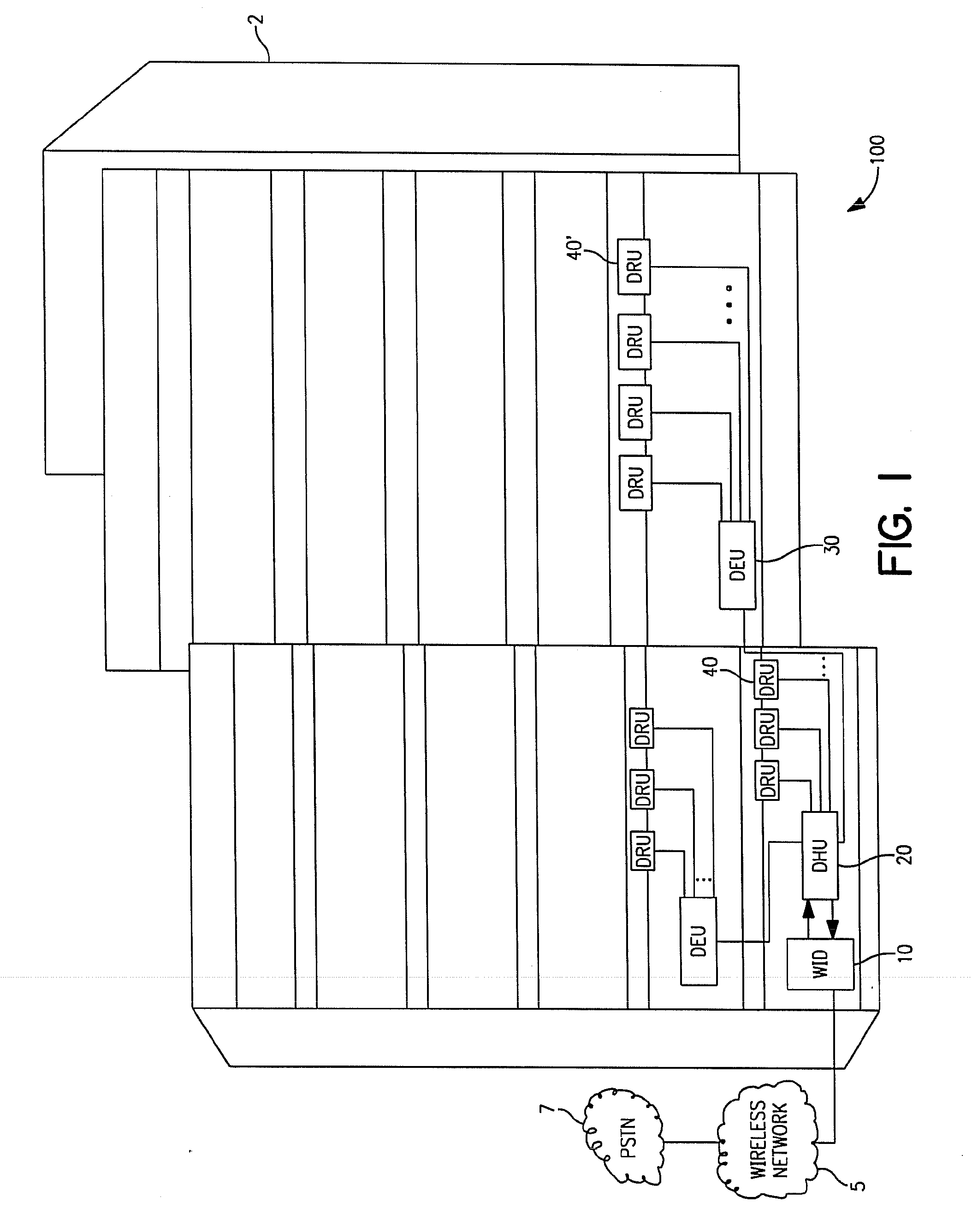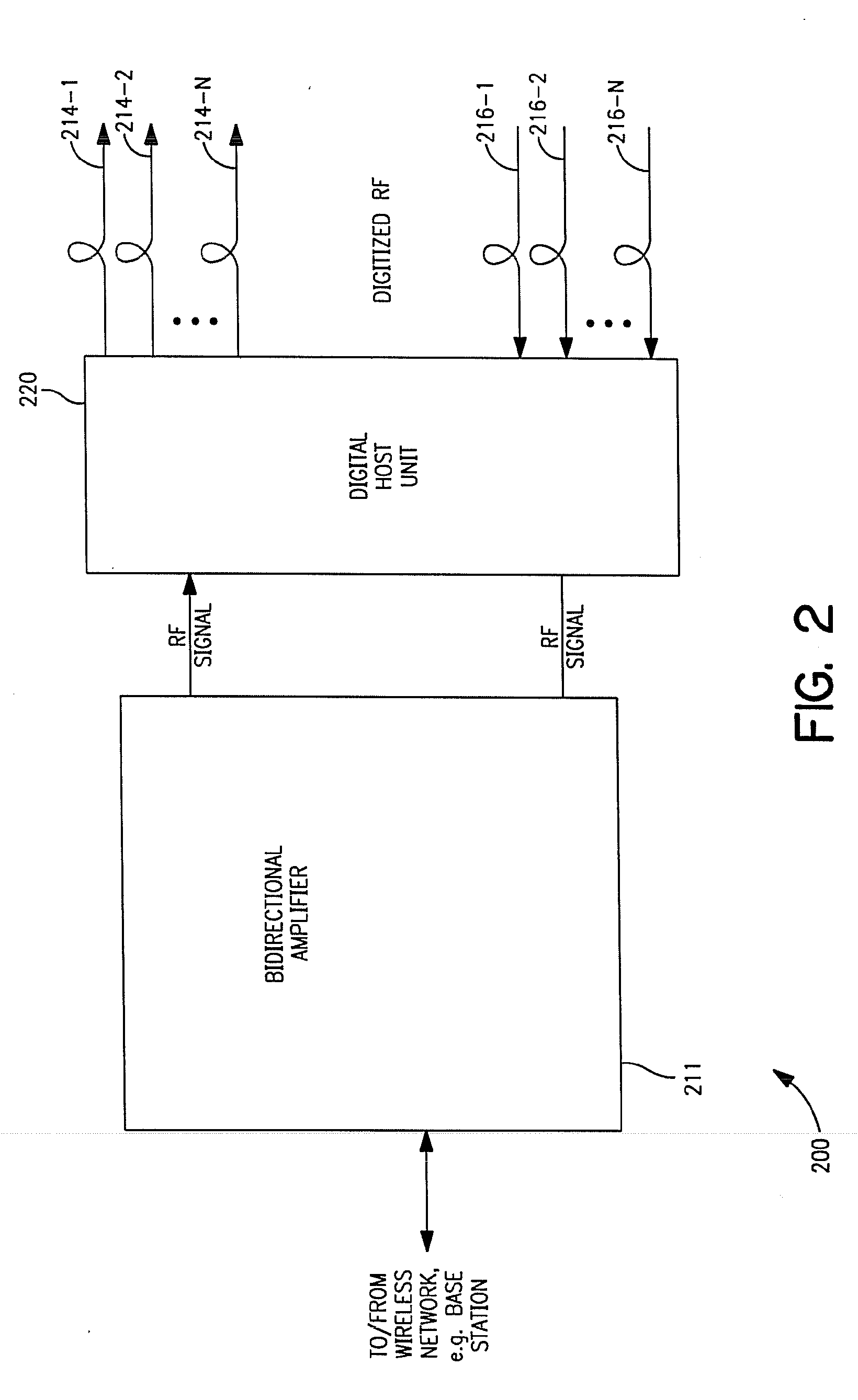Point-to-multipoint digital radio frequency transport
a digital radio frequency transport and multi-point technology, applied in the field of high-capacity mobile communication systems, can solve the problems of significant interference in the forward path of signal splitting in the forward path, steel frame buildings, and inability to provide full coverage in these areas
- Summary
- Abstract
- Description
- Claims
- Application Information
AI Technical Summary
Benefits of technology
Problems solved by technology
Method used
Image
Examples
Embodiment Construction
[0020]In the following detailed description of the preferred embodiments, reference is made to the accompanying drawings that form a part hereof, and in which is shown by way of illustration specific embodiments in which the invention may be practiced. It is to be understood that other embodiments may be utilized and structural changes may be made without departing from the scope of the present invention.
[0021]FIG. 1 is an illustration of one exemplary embodiment of a point-to-multipoint digital transport system shown generally at 100 and constructed according to the teachings of the present invention. The point-to-multipoint digital transport system 100 is shown distributed within a complex of tall shiny buildings (TSBs) 2. Although system 100 is shown in a complex of TSBs 2, it is understood that system 100 is not limited to this embodiment. Rather, system 100 in other embodiments is used to distribute signals in a single building, or other appropriate structure or indoor or outdo...
PUM
 Login to View More
Login to View More Abstract
Description
Claims
Application Information
 Login to View More
Login to View More - R&D
- Intellectual Property
- Life Sciences
- Materials
- Tech Scout
- Unparalleled Data Quality
- Higher Quality Content
- 60% Fewer Hallucinations
Browse by: Latest US Patents, China's latest patents, Technical Efficacy Thesaurus, Application Domain, Technology Topic, Popular Technical Reports.
© 2025 PatSnap. All rights reserved.Legal|Privacy policy|Modern Slavery Act Transparency Statement|Sitemap|About US| Contact US: help@patsnap.com



